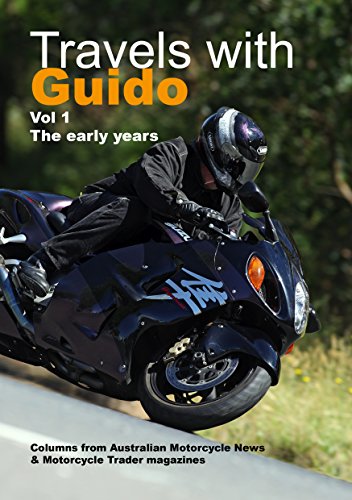Motorcycle Investor mag
Subscribe to our free email news
MV Agusta 850 SS Monza
(by Ian Falloon, Mar 2022)

Falloon on
the last of a classic MV line
(Pic: Classic Avenue auctions)
Between 1952 and 1976 MV
Agusta dominated the world of Grand Prix motorcycle
racing. Their formidable record included 270 World
Championship races, 38 rider championships and 37
manufacturers championships but by the end of 1976 the
company was in trouble.
On the racetrack their
air-cooled four-strokes were no longer competitive
against the liquid-cooled two-strokes. The factory
racing department closed and MV Agusta’s expensive
street bikes languished in showrooms. Rumours emanated
about a merger with Ducati and MV motorcycle production
moving to Bologna.
The 750 America of 1975 was
meant to be MV Agusta’s saviour. Jim Cotherman and Chris
Garville of the Commerce Corporation in New York
persuaded MV’s directors the future lay in the US and
optimistically predicted sales of 500 750 Americas a
year. Although the America cost more than $6000 (three
times that of a Kawasaki Z1) Cotherman and Garville
gambled on an expanding market for luxury consumer
goods.
Unfortunately they were a few
decades ahead of their time and Americans weren’t ready
for such a motorcycle. The 750 America was a sales
disaster and two years later new unsold stock still
remained at the factory.
Although MV was no longer
building motorcycles, in 1977 long time factory racing
team manager Arturo Magni was requested to convert some
of the remaining America stock into the 850 SS. MV’s
four-cylinder engine had been pensioned off in 1966 as a
racing design, and while no longer at the cutting edge
of technology the venerable four was still a formidable
and impressive unit.
A train of spur gears drove double overhead camshafts
and along with the pressed together roller bearing crank
was supported in the sand-cast crankcase by a
substantial rack. The engine may have started life as a
500 Grand Prix design but it was intrinsically strong
enough to cope with nearly double its original capacity.
Magni had prepared racing
fours for multiple world champions, in particular John
Surtees and Mike Hailwood, and knew these engines inside
out. He enlarged the cylinder head ports and installed
69mm pistons, up from the America’s 67mm. The
compression ratio was claimed to be 9.5:1 but was
probably higher. The individual barrels were thinner
than on the America and with the standard 56mm stroke
the displacement was 837cc.
The 850 SS had the largest
capacity factory-produced production four-cylinder
engine, and it was also the most powerful, producing an
estimated 85 horsepower at 9500rpm (with some claims of
95 horsepower).
Much of the power increase
was due to the installation of two America inlet
camshafts (another inlet replacing the exhaust), a set
of four unfiltered Dell’Orto VHB 27A carburettors, and
four open chromed mufflers. Other features unique to the
850 SS included a dual-point Marelli 7K distributor
providing a reduced dwell angle, allowing the coil to
charge more quickly at higher rpm.
The 850 SS chassis was
ostensibly that of an America and arguably compromised
for full sporting use. Like the America the final drive
was by a shaft, with a heavy crown wheel and pinion, and
the frame was tall to allow cylinder head removal with
the engine in situ.
With a dry weight of 230kg
the 850 wasn’t exactly svelte. But while many Americas
left the factory with Borrani wire wheels and leaking
Scarab brakes the 850 SS had a set of EPM cast alloy
wheels and superior Brembo brakes. The 38mm Ceriani
front fork and Sebac shock absorbers were straight from
the America.
The 850 SS, or Monza, wasn’t
a bike you could see on display at the local dealership
in 1977. This was a limited edition motorcycle only
available on special order to the few that could afford
it. By the time the 850 SS Monza appeared MV was about
to close its doors, leaving the model as something of an
enigma.
Undeniably exclusive, because
it retained the shaft final drive it didn’t offer
significant functional superiority over other modified
Americas with a Magni chain drive conversion. The Monza
may have been a pragmatic response to liquidating unsold
stock but it was the end of the era for MV’s racing
four.
-------------------------------------------------
Produced by AllMoto abn 61 400 694 722
Privacy: we do not collect cookies or any other data.

Archives
Contact





